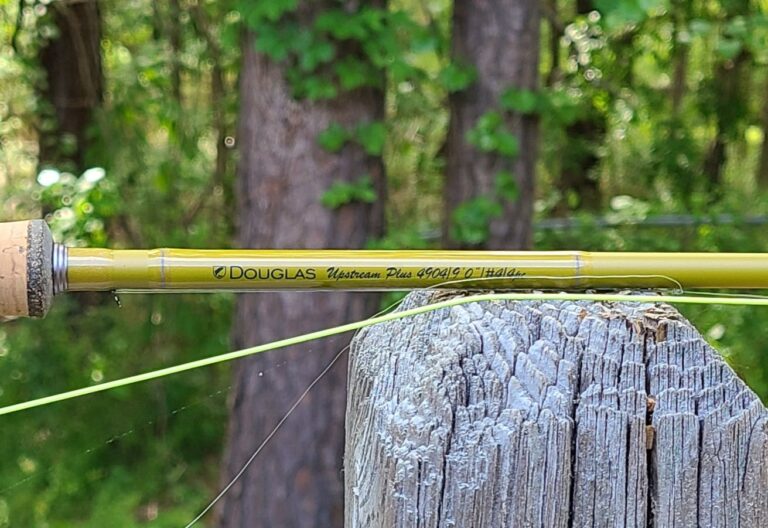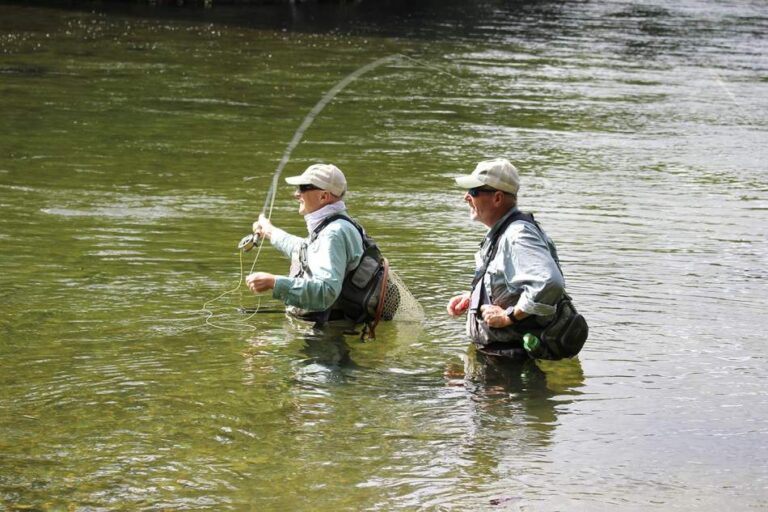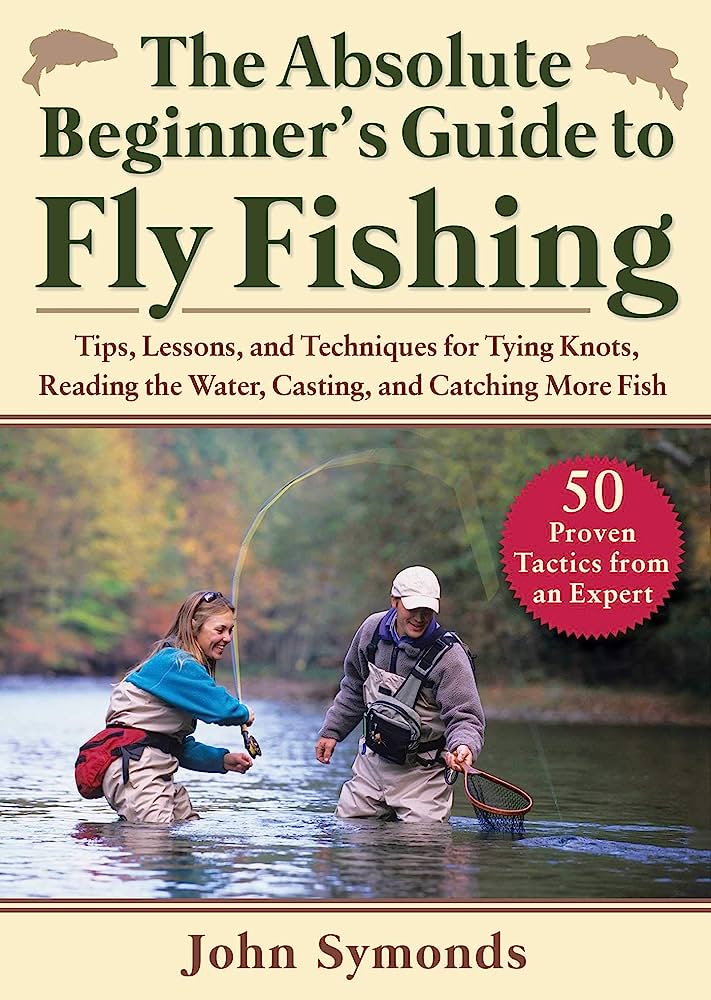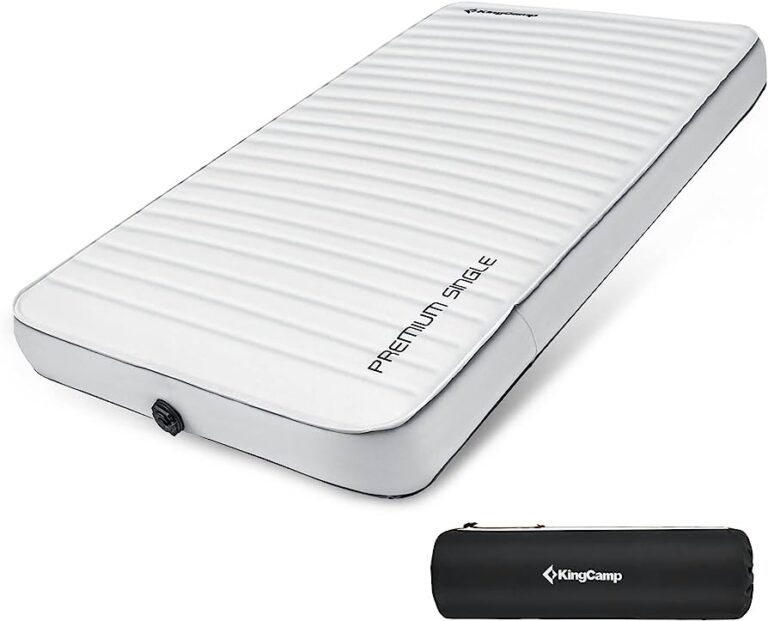There are several types of fly fishing rods, including bamboo, fiberglass, graphite, and carbon fiber. Each type has its own characteristics and benefits, making them suitable for different fishing conditions and preferences.
Bamboo rods offer a classic feel and are known for their smooth casting, while fiberglass rods are durable and ideal for beginners. Graphite rods are lightweight and provide excellent sensitivity and accuracy, while carbon fiber rods are the most modern and versatile option, offering a combination of strength and flexibility.
Whether you’re a seasoned angler or just starting out, there’s a fly fishing rod out there that can enhance your fly fishing experience.

Credit: stpetes.com
Understanding The Basics Of Fly Fishing Rods
Fly fishing rods are essential tools for any fly angler, as they play a crucial role in casting and presenting flies to fish. Before delving into the different types of fly fishing rods, it is important to understand the key components that make up these versatile pieces of equipment.
Anatomy Of A Fly Fishing Rod
Handle
The handle, also known as the grip, is the part of the rod that the angler holds onto while casting and fighting fish. It is typically made of cork or synthetic materials, and its design can vary based on personal preference.
A comfortable handle offers better control and reduces hand fatigue during long fishing sessions.
Reel Seat
Located at the bottom of the rod handle, the reel seat securely holds the fly reel in place. It is usually made of lightweight materials, such as aluminum or graphite, and comes in various designs. A reliable reel seat ensures proper alignment of the reel and balances the weight of the rod.
Guides
The guides are the small, often metal, rings mounted along the length of the rod. They serve the purpose of guiding the fly line and leader during casting and retrieving. The number and size of guides can vary depending on the rod’s length and intended use.
High-quality guides help reduce line friction and enhance casting performance.
Blank
The blank refers to the main body or shaft of the rod, excluding the handle, reel seat, and guides. It is typically made of graphite, fiberglass, or a combination of both materials. The blank’s flexibility and stiffness determine the rod’s action, which is another crucial factor to consider when selecting a fly fishing rod.
Key Components Of Fly Fishing Rods
Length
The length of a fly fishing rod plays a vital role in casting distance and maneuverability. Shorter rods offer increased accuracy and control in tight spaces, making them ideal for smaller streams. Conversely, longer rods excel in long casts and provide better line mending capabilities, making them suitable for larger rivers and open waters.
Weight
Fly fishing rods are classified by weight, indicating the line weight they are designed to cast effectively. The weight of the rod influences the size and type of fish it can handle. Lighter weight rods are suitable for smaller fish and delicate presentations, while heavier weight rods are designed for larger fish and powerful casts.
Action
The action refers to how a fly fishing rod bends or flexes when pressure is applied to it. Rod action is classified as slow, medium, or fast. Slow action rods bend throughout their length, allowing for a more controlled and delicate presentation.
Fast action rods, on the other hand, flex only in the tip section, providing increased casting distance and power. Medium action rods offer a balance between the two.
Material
The material of a fly fishing rod greatly impacts its performance and overall feel. Graphite rods are lightweight, sensitive, and offer excellent casting accuracy. Fiberglass rods provide a slower and more forgiving action, making them ideal for beginners and delicate presentations.
Some rods combine both graphite and fiberglass to achieve a blend of sensitivity and flexibility.
Understanding the basics of fly fishing rods, including their anatomy, key components, and different types, sets the foundation for selecting the right rod for your angling needs. Now that you’re familiar with these essential aspects, let’s explore the various types of fly fishing rods in more detail.
Exploring The Different Types Of Fly Fishing Rods
Fly fishing is a beloved pastime for many outdoor enthusiasts and anglers. One of the essential pieces of equipment in fly fishing is the fly fishing rod. These rods come in various types, each designed to cater to specific fishing scenarios and preferences.
In this section, we will explore the different types of fly fishing rods and discuss their characteristics, advantages, and popular brands and models.
Fast Action Fly Fishing Rods
Fast action fly fishing rods are known for their stiff and responsive tips, making them ideal for casting long distances and handling larger fish. Here are some key points to note about fast action fly fishing rods:
- Characteristics and advantages:
- Fast action rods have a quick recovery time, allowing for efficient and accurate casts.
- They offer great sensitivity, enabling anglers to detect even the slightest nibbles.
- These rods provide the power needed to cast heavy or wind-resistant flies.
- Suitable fishing scenarios:
- Fast action rods are commonly used in windy conditions or when casting through dense cover.
- They excel in catching larger species such as salmon, steelhead, and bass.
- Popular brands and models:
- Sage x series: Known for its powerful and precise casting abilities.
- G. loomis asquith: Highly regarded for its exceptional strength and accuracy.
- Orvis helios 3d: Offers excellent power and versatility for various fishing conditions.
Medium Action Fly Fishing Rods
Medium action fly fishing rods strike a balance between power and flexibility, making them suitable for a wide range of fishing scenarios. Let’s take a look at their characteristics, advantages, and popular brands and models:
- Characteristics and advantages:
- Medium action rods provide a more forgiving casting stroke, making them easier to control.
- They offer a delicate presentation, ideal for targeting small to medium-sized fish.
- These rods allow for a smoother playing of fish, reducing the risk of hook pulls or break-offs.
- Suitable fishing scenarios:
- Medium action rods are versatile and can be used in various fishing environments, from rivers to lakes.
- They are well-suited for trout fishing, especially when using dry flies or nymphs.
- Popular brands and models:
- Redington classic trout: Renowned for its affordability and versatility for trout fishing.
- Thomas & thomas contact: Designed specifically for euro nymphing techniques.
- Scott radian: Offers a combination of power, finesse, and accuracy.
Slow Action Fly Fishing Rods
Slow action fly fishing rods provide a smooth and relaxed casting experience, making them ideal for delicate presentations and smaller fish species. Here are the key points to know about slow action fly fishing rods:
- Characteristics and advantages:
- Slow action rods have a deeper flex throughout, allowing for more precise and controlled casts.
- They offer a gentle touch, minimizing disturbance when presenting flies on the water.
- These rods provide an enjoyable angling experience, especially for beginners or those seeking a slower pace.
- Suitable fishing scenarios:
- Slow action rods shine in small streams or for fishing situations that require finesse.
- They are great for targeting trout, panfish, and other smaller freshwater species.
- Popular brands and models:
- Fiberglass fly rods: Various brands offer high-quality fiberglass rods known for their slower action.
- Epic 476: A popular slow action rod appreciated for its craftsmanship and performance.
- Butter stick: A renowned slow action rod series loved by anglers who enjoy a classic feel and style.
As you can see, fly fishing rods come in different types to accommodate various fishing styles and preferences. Whether you prefer the power of a fast action rod, the versatility of a medium action rod, or the finesse of a slow action rod, there is a perfect choice for every angler.
Explore these options from popular brands and models, and find the rod that best suits your needs and enhances your fly fishing experience
Choosing The Right Fly Fishing Rod For Your Needs
Choosing the right fly fishing rod is crucial for a successful fishing experience. With a wide range of options available, it can be overwhelming to determine which rod is best suited for your needs. In this section, we will explore the factors to consider when choosing a fly fishing rod, including the fishing environment, targeted fish species, skill level and experience, budget, personal preferences, as well as the weight and length of the rod.
Factors To Consider
When selecting a fly fishing rod, there are several factors you should take into account:
Fishing Environment
Consider the type of fishing environment you will be in. Will you be fishing in freshwater or saltwater? Is it a river, lake, or ocean? Different environments may require specific features in a fly fishing rod to ensure optimal performance and durability.
Targeted Fish Species
The fish species you plan to target also plays a significant role in selecting the right fly fishing rod. Some species are larger and more powerful, requiring a stronger and stiffer rod, while others may be smaller and more delicate, requiring a lighter and more flexible rod.
Skill Level And Experience
Your skill level and experience in fly fishing should be considered when choosing a rod. Beginners may benefit from a rod that offers forgiveness and ease of use, while experienced anglers might prefer a more specialized and advanced rod that allows for greater precision and control.
Budget
Your budget is an important factor to consider as fly fishing rods can range in price. Determine how much you are willing to spend and look for a rod that offers the best value for your money. Remember, an expensive rod doesn’t always guarantee better performance.
Personal Preferences
Personal preferences also come into play when selecting a fly fishing rod. Do you prefer a fast action or a slow action rod? Do you prefer a specific rod material such as graphite or fiberglass? Taking these preferences into account will ensure that you enjoy using your rod to the fullest.
Understanding Fly Rod Weight And Length
Another essential aspect of choosing the right fly fishing rod is understanding the weight and length measurements. These measurements have a significant impact on the rod’s performance and suitability for specific fishing scenarios.
Weight Considerations
Fly fishing rods are categorized by weight, typically ranging from 1 to 15. The weight refers to the size of the fly line the rod is designed to cast efficiently. Lighter weight rods (1-4) are best suited for smaller fish and delicate presentations, while heavier weight rods (5-15) are capable of handling larger fish and casting heavier flies.
Pros And Cons Of Lighter And Heavier Rods
Lighter rods offer increased sensitivity and delicate presentations, making them ideal for fishing in smaller streams and targeting smaller fish. On the other hand, heavier rods offer more power and can handle larger fish species and more challenging fishing conditions.
Length Considerations
The length of a fly fishing rod is crucial as it affects casting distance, line control, and accuracy. Shorter rods (around 7-8 feet) excel in tight spaces and small streams, while longer rods (9 feet or more) provide better reach and line control, making them a preferred choice for larger bodies of water and open areas.
Pros And Cons Of Shorter And Longer Rods
Shorter rods are maneuverable and excel in close-quarters fishing, while longer rods offer increased reach and casting distance. Shorter rods are generally easier to control, while longer rods allow for more extended line mending and better line management.
Matching Fly Rods With Fly Lines And Reels
To ensure optimal performance, it is crucial to match the fly rod with the appropriate fly line and reel. The weight and taper of the fly line should be compatible with the rod, and the reel should provide a balanced setup.
Weight And Taper
The weight of the fly line should match the weight of the rod to achieve a balanced setup. Additionally, the taper of the fly line can affect casting performance, with different tapers serving specific fishing techniques and conditions.
Compatibility And Balance
When selecting a reel, it is essential to ensure compatibility and balance with the fly rod. The reel should be the right size and weight to complement the rod’s characteristics and provide a comfortable fishing experience.
Choosing The Appropriate Reel
The reel plays a vital role in controlling the line and fighting fish. Consider the drag system, construction material, and overall quality of the reel when making your selection. A reliable and durable reel will enhance your overall fly fishing experience.
Popular Fly Fishing Rod Brands And Models
While there are numerous fly fishing rod brands and models in the market, here are a few popular options to consider:
Brand 1
- Model 1
- Model 2
Brand 2
- Model 1
- Model 2
With this comprehensive overview of the factors to consider when choosing a fly fishing rod, you can confidently make an informed decision that suits your needs, preferences, and fishing goals. Remember to consider the fishing environment, targeted fish species, skill level and experience, budget, personal preferences, as well as the weight and length of the rod.
By selecting the right rod, you’ll enhance your fly fishing experience and increase your chances of success on the water.
Conclusion
Understanding the different types of fly fishing rods is essential for any angler looking to improve their fishing experience. Whether you’re a beginner or a seasoned fly fisherman, knowing the characteristics and purposes of various rod types will help you make more informed choices when selecting the right tool for the job.
From the flexibility of fiberglass rods to the lighter and more sensitive graphite rods, each type has its advantages and suits different fishing styles and conditions. The action, length, and weight of a fly fishing rod all play significant roles in determining its performance on the water.
By considering factors such as the type of fish you’re targeting, the type of water you’ll be fishing in, and your personal preferences, you can narrow down your options and choose the perfect rod for your needs. Remember, whether you prefer the nimbleness of a fast-action rod or the forgiveness of a slow-action one, investing in a well-suited fly fishing rod is a worthwhile endeavor that will enhance your fly fishing adventures for years to come.
Happy fishing!






